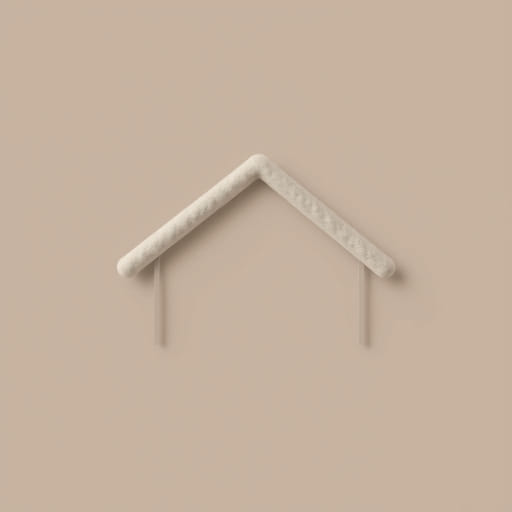Choosing the right material for a shed roof can make a significant difference in its durability, weather resistance, and overall appearance. One of the most common and cost-effective options is roofing felt. Felt for shed roofs is a tried and tested material that provides solid protection against rain, wind, and even UV exposure. Whether you’re building a new shed or replacing old roofing, understanding how felt works, the types available, and how to install it properly is essential for long-lasting results. Shed roofing felt is especially valued for its simplicity, affordability, and effectiveness.
What Is Roofing Felt?
Roofing felt is a flexible sheet made of either organic or synthetic materials soaked in bitumen, asphalt, or another waterproofing agent. It is commonly used as a protective layer under shingles or as a standalone roofing solution for smaller outbuildings like garden sheds and summerhouses. It acts as a barrier against moisture and prolongs the life of the roof by preventing leaks and rot.
Benefits of Using Felt for Shed Roofs
There are several compelling reasons to choose roofing felt for your shed:
- Waterproof Protection: Felt prevents rain and moisture from penetrating the roof structure.
- Affordable Option: Compared to other roofing materials, felt is relatively inexpensive and widely available.
- Easy to Install: With basic tools and DIY skills, most homeowners can install felt themselves.
- Good Insulation: Roofing felt can provide a degree of insulation against temperature extremes.
- Suitable for Various Shed Sizes: Felt can be cut to fit sheds of different shapes and sizes, offering flexibility in application.
Types of Shed Roof Felt
Different types of felt are available depending on your needs, budget, and climate. The most common ones include:
Standard Shed Felt
This is the most basic type, typically made of bitumen and reinforced with fibers. It’s ideal for small sheds with low footfall and offers basic waterproof protection. It’s often available in green or black and usually lasts around 5 to 10 years.
Heavy-Duty Shed Felt
This felt is thicker and more robust, often reinforced with polyester for added strength. It resists tearing and cracking better than standard felt and can last up to 15 years or more. It’s a great option for exposed locations or larger sheds.
Self-Adhesive Felt
As the name suggests, this type comes with a sticky underside, eliminating the need for nails or adhesive glue. It’s easier to apply and can create a neater finish, though it’s usually more expensive than other types.
Mineral Felt
This variety features a mineral finish on the outer surface, which improves UV resistance and extends durability. It is usually found on premium garden buildings or summerhouses where appearance matters as much as performance.
How to Install Felt on a Shed Roof
Installing felt is a straightforward DIY task, especially if you follow these basic steps:
Step 1: Prepare the Roof
Ensure the shed roof is clean, dry, and free from any old roofing material. Replace any damaged boards and check that the structure is solid.
Step 2: Measure and Cut the Felt
Measure the length and width of your shed roof and cut the felt into appropriate sections, allowing a 510 cm overhang on all sides for adequate coverage.
Step 3: Position the Felt
Lay the first strip along the bottom edge of the roof, starting at the back. Smooth it out to remove any air bubbles or creases. Fix it in place with galvanized roofing nails along the top edge.
Step 4: Overlap and Fix Additional Layers
Each additional strip should overlap the previous one by at least 5 cm to prevent water ingress. Nail each layer securely and ensure the overlaps are tight.
Step 5: Secure the Edges
Once all the layers are in place, fold the overhanging edges over the roof edges and fix them with nails or felt adhesive. Use timber batten strips if necessary for a clean finish.
Maintenance Tips for Felt Roofs
To prolong the life of your felt shed roof, regular maintenance is important. Here are some useful tips:
- Inspect Annually: Check for signs of wear, lifting, or tears at least once a year.
- Clean Debris: Remove leaves, branches, or other debris that may accumulate and trap moisture.
- Repair Promptly: Patch up any damage with roofing adhesive or bitumen patches as soon as possible to prevent further deterioration.
- Recoat if Necessary: Some felt products can be recoated with a waterproofing solution to restore their effectiveness after a few years.
When to Replace Felt on Shed Roof
Even the best felt won’t last forever. You may need to replace the shed roof felt if you notice:
- Persistent leaks or damp inside the shed
- Cracking, peeling, or splitting on the surface
- Loose or lifting sections, especially after strong winds
- Moss or algae growth indicating trapped moisture
Alternative Options to Felt
While felt is a great choice for many, some alternatives may be more suitable depending on your specific needs:
- EPDM Rubber Roofing: Long-lasting and highly resistant to weather, but more expensive and requires adhesive application.
- Corrugated Metal Sheets: Durable and modern-looking, but can be noisy during rain and prone to rust if not treated.
- Shingles: Decorative and sturdy, but take longer to install and are pricier than felt.
Felt for shed roof applications remains one of the most popular and reliable solutions for homeowners and gardeners alike. It strikes a great balance between affordability, ease of installation, and solid weatherproofing. By choosing the right type of felt and maintaining it regularly, you can extend the life of your shed and keep its contents dry and safe for many years. Whether you’re building a new structure or upgrading an old one, roofing felt continues to be a smart and practical choice.
